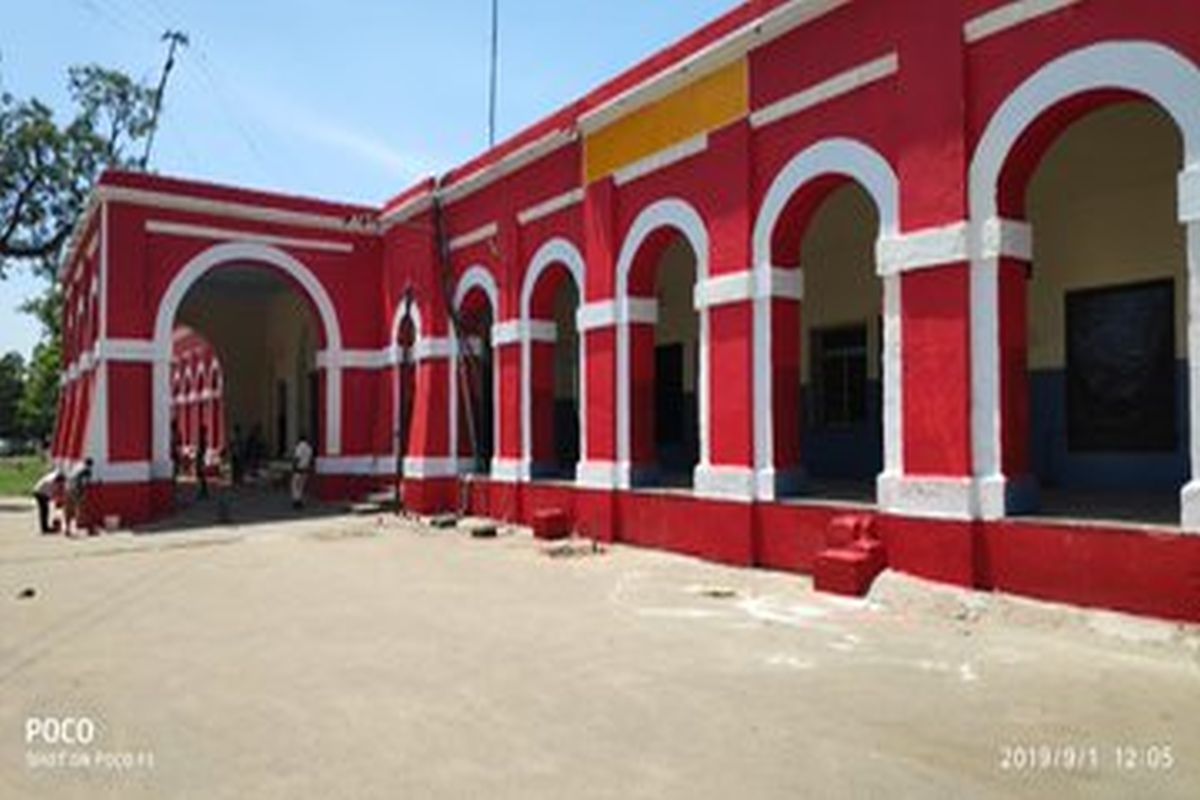The heritage station building of Rajmahal, the oldest station of the Malda Division of Eastern Railways, which was also once the capital of Bengal during the Mughal period has been restored completely. The first train in this section from Howrah to Rajmahal had started on 4 July 1860.
The old station building, with its thick brick mortar walls, high roof and iron structures constructed during 1860, was in a dilapidated condition. Talking to The Statesman, Mr Prashant Kumar Mishra, chief workshop engineer of Eastern Railways, who is also holding the additional charge of divisional railway manager (DRM) of Malda informed that the division took it as a challenge and embarked on intensive rehabilitation including comprehensive roof attention.
Advertisement
“The entire roof has been given APP treatment and problem of water seepage was addressed. The whole building was given a fresh lease of life. Heritage plaque and framed photographs will be provided in the first ever heritage station building of the Malda Division,” Mr Prashant Kumar Mishra added. Historical texts of the time note that the Ganges was continuously navigable at all seasons of the year at Rajmahal for steamers for a distance of five hundred miles. The river traffic was estimated at more than two million tonnes, while road traffic was estimated only 33,370 tonnes.
It was expected that rail connectivity between Calcutta and Rajmahal would avoid the five hundred and twenty eight miles of a long circuitous route of “rapid and ever tortuous Bhaugerrutte, long labyrinth of Soonderbunds, which would be navigable only eight months of the year”. The river traffic was extremely dangerous due to frequent ship wrecks and total loss of large amounts of property, according to historians. A contract was signed between the East India Company and the East Indian railway Company on 17 August 1849, entitling the latter to construct and operate an “experimental” line between Calcutta ~ the existing seat of power of British India and Rajmahal, old capital of Bengal.
“The expenditure of £ 1,000,000 was sanctioned for the first section: from Howrah, opposite Calcutta, to Raneegunge, via Pandooah and Burdwan. The line is to be continued from Burdwan, in a northernly direction, to Rajmahal, and hence probably along the right bank of the Ganges to Patna, Mirzapore and Allahabad. A further sum of £1,000,000 has been sanctioned for the purpose of continuing the extended line to Rajmahal”, one historical text notes. At present, only one passenger train runs between Tinpahar Junction to Rajmahal station, which is about eight kilometres, three times daily. The railways has been continuously reviving its old dilapidated heritage buildings in the country.











